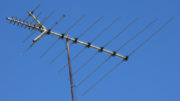There are a lot of rumors out there about a new device being developed by AT&T. It’s even been mentioned on some investor calls. Personally there’s not a lot I can say about it, but I think if you look around the internet you can probably find people who were willing to violate their non-disclosure agreements. Good for them, they scooped the world but they’ll never be in another closed beta again.
I’ve started to hear concerns from customers like this one:
When the new box comes out, the one they say won’t need a truck roll, won’t all my satellite equipment be obsolete? Why should I even bother upgrading today? I’m wasting my time and losing money waiting for an installer.
Well, there’s a lot to unpack there, as they say.
It’s been publicly stated that there will be an AT&T device that users can connect by themselves. That device will run something similar to the DIRECTV programming we see now. That’s all that’s been made public. I have to tell you, there are a lot of rumors out there and most of them are hilariously wrong. I hate to be “that guy” who taunts you with knowledge he won’t share. There is simply no other option right now.
Let’s focus on the satellite side.
Here’s the stuff we can talk about. Satellite TV is still strong. Despite subscriber losses (which are less than cable is experiencing) DIRECTV Satellite is still the largest single live pay-TV service in the world. Period. You are not going to see AT&T ditch over 20 million customers overnight. That is not going to happen no matter what equipment they roll out.
AT&T is actually doubling down on satellite technology. I know that there was a statement that they “aren’t launching any more satellites.” Except, they did. They launched the T16 satellite after that statement was made. It’s already up there and it will soon be ready to provide even more capacity.
AT&T has a massive satellite fleet and while some of it is older, just the newer satellites (DIRECTV12/T12 and newer) are enough to keep the company fully stocked for another decade or so. That’s true even if there is a massive jump in the number of 4K channels, which there probably won’t be.
You’re still safe, for a long time
Eventually, there will be some change. Nothing lasts forever. There will be an end to satellite service as we know it. That’s a long way off. When it does come, though, it will come slowly.
Look at how older technology has been handled in the past. The original guide technology for DIRECTV was called MPG. Its successor, APG, was released in 2003. Support for those MPG receivers didn’t stop until 2013. DIRECTV rolled out its first MPEG4HD receivers in 2006, but they still haven’t completely phased out the old MPEG2 receivers. They should be done with that by 2021.
My point here is that stuff doesn’t go away instantly. Let’s pretend AT&T announced today that they were going all-IP, no satellite from this day on. By the way, they’re not announcing that. Satellite would still be supported for another decade most likely.
But, but, the ease of installation, the lack of truck roll…
I get you. You don’t want to take a half day off work and have more holes drilled in your walls. But how sure are you about this upcoming service? Is it going to have everything you need? Will it be every single channel? Will it support the way you want to watch TV? I don’t have those answers. Anyone on the internet who tells you they do is either lying or they’re a top AT&T exec about to get fired for violating their non-disclosure agreement.
For now, satellite is still your best bet. I’m willing to say that for most of our Solid Signal customers, there won’t be a better bet for a long time.





